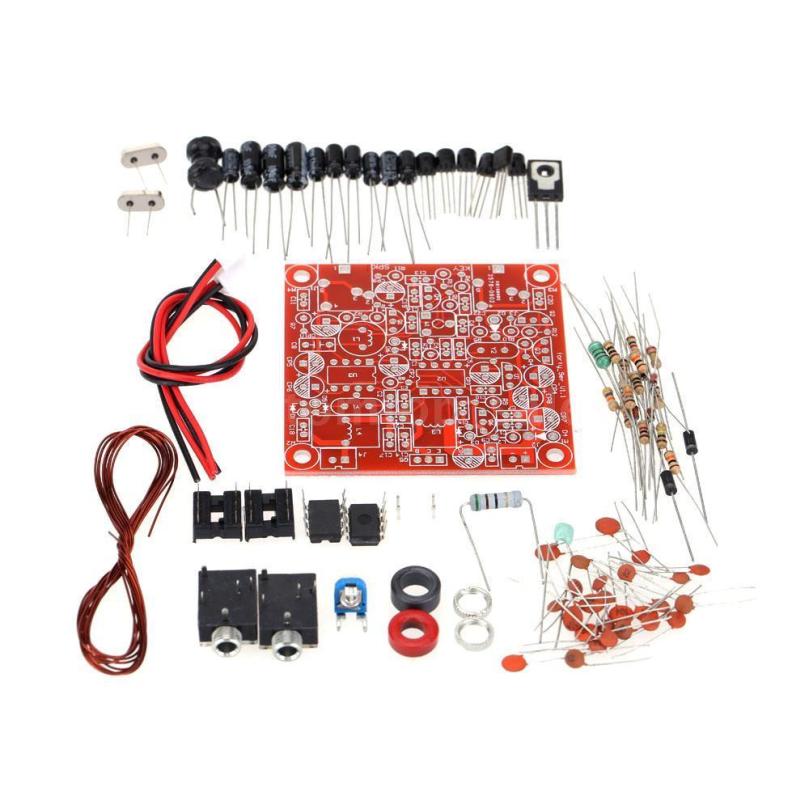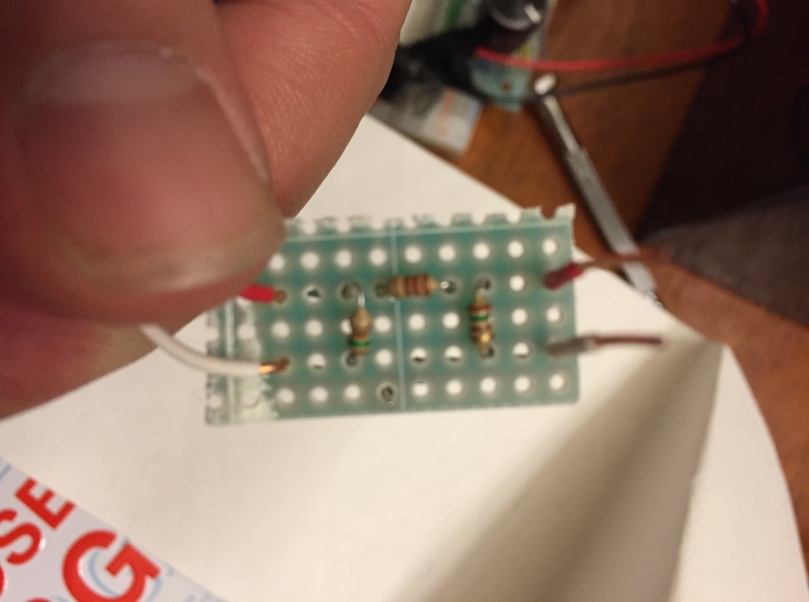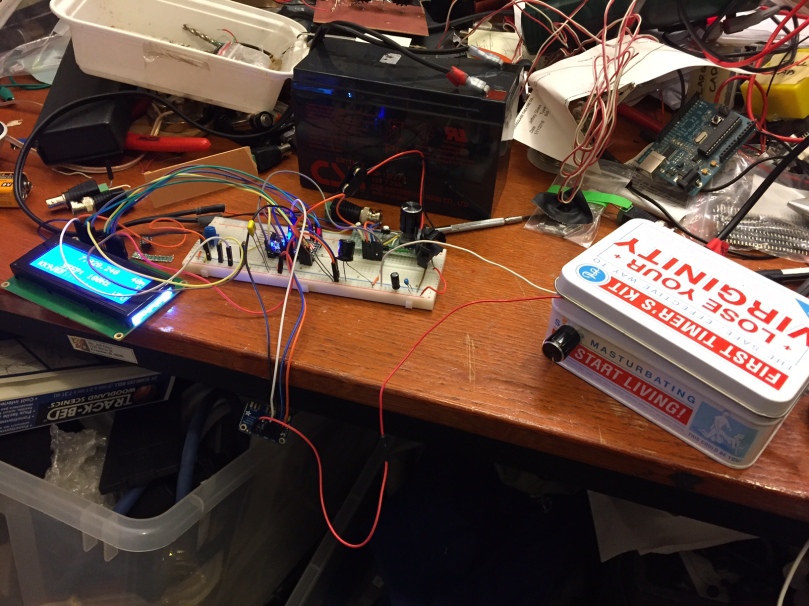(Since this was originally posted, this transceiver has also gained a laser-cut faceplate.)
Long story short, I’ve got a new transceiver!
Back in March, QST magazine published an article about modding a cheap Forty-9er kit from eBay to incorporate a digital VFO. The original Forty-9er was a kit from the NorCal QRP club, a 40m transceiver designed to run on a 9V battery, hence the name. It, like many other kits, is based around an NE602 and an LM386. In the last couple years, cheap kits bearing the same name have been appearing on eBay, which bear only a scant resemblance to the original. The biggest difference is that where the original kit had a VXO attached to the NE602 mixer, the eBay kits are designed to be rock-bound to a single frequency. Perhaps this was the motivator for the QST article, to restore some frequency coverage to these fixed-frequency kits.

The process of using a digital VFO with an NE602 architecture is simple enough. Specifically, an AD9850 breakout board is used to provide the signal, and a small BJT amplifier increases the power output from the DDS chip. The oscillator power is adjusted to show about 300mV P-P in-situ. After the article was published, one of the authors, K2ZIA produced a limited run of kit boards, which include the amplifier and sockets for both the AD9850 board and an Arduino Nano to control the DDS over i2c.

I purchased the breakout board, AD9850, Forty-9er kit, Arduino Nano, and a rotary encoder from a fellow ham, Justin AJ2Q, who had gathered the pieces but was focusing on other pursuits and wanted to pass the project on. Final assembly was pretty straightforward; there are a couple of mods that need to be made to the Forty-9er (specifically, replacing the oscillator crystal with an input for the VFO, and swapping the crystal input bandpass filter for a much-wider two-element bandpass filter), and connection made so that the Arduino can detect when the key is down and shift frequency. AJ2Q had already done most of this, so only some final tweaks and cleaning up some soldering were necessary.
The original Arduino code was designed to make use of a 16×2 LCD display to display the current frequency, as well as licensing information according to the 40m band plan. Since I’ve already been playing with an LCD display on another ongoing project, and since I wanted this to be a simple and durable bit of kit, I wrote a bit of code that instead flashes the current frequency in morse code on a panel-mounted LED. The display is triggered by the press of a button. The number of digits to display is configurable. I’ve found that just displaying the three kilohertz digits is plenty (I don’t need to be reminded I’m on the 7 MHz band every time, and I don’t need precision better than KHz for simple operating). As always, you can see the code on Github.

The full schematic of the original Forty-9er as well as the necessary mods can be found on Farruk K2ZIA’s website. The only additional hardware changes I made were to wire an LED and a 1k resistor between Arduino pin 14 and ground for the LED, and an SPST button between Arduino pin 4 and ground to trigger the frequency display. Like the original code, depressing the encoder changes the tuning rate, though I modified the possible step values to be only 1000Hz, 100Hz, and 10Hz, in that order. 1KHz is useful for zooming around the band, 100 Hz is useful for tuning a specific signal, and the 10Hz step is mostly for resolving SSB/DSB/AM signals cleanly.
On the rear of the radio are the BNC antenna jack and the power pole power input. (Useful tidbit – a pair of connected 30A powerpoles fit neatly in the cut-out for a VGA connector!) I’ve yet to fashion a front-panel, so the connections on the Forty-9er board for a key and headphones are directly accessible.

I’ve had the rig out to the park a handful of times now, and it sounds good! Like my other direct-conversion NE602-LM386 experiments, the audio quality is great, but broad as barge, so selectivity suffers. The sidetone is clean, at around 700Hz, from the Forty-9er’s little BJT oscillator. I enjoy being able to tune up into the phone portion of the band and listen to SSB QSOs and nets and such, which provide a good sketch of current propagation conditions. Being able to quickly switch between tuning steps is helpful, as I tune around and try to find someone sending CW slow enough for me to keep up.

The only major limitation of the rig is that, with only a single-resonator input bandpass filter, out-of-band signals can get into the radio and cause interference. Specifically, World Harvest Radio WHRI, who maintain and 500KW (no that’s not a typo) transmitter in South Carolina, is often audible everywhere on the dial, which is distracting at best. A stiffer bandpass filter will be necessary soon. I’ve also been experimenting with a peaked audio filter to help with reception of CW, but that’s still experimental.
The unit puts out about 3 Watts, which proved to be enough to make my first CW contact and, over the weekend, my second. The gentleman on the other end this time was Gary N4PIR, who was running 5W on his FT-817 into a trapped vertical. I think a little afterburner would be helpful on my end, as we were definitely fighting QSB. But that’s a later project.
Hear you on the air!
73










